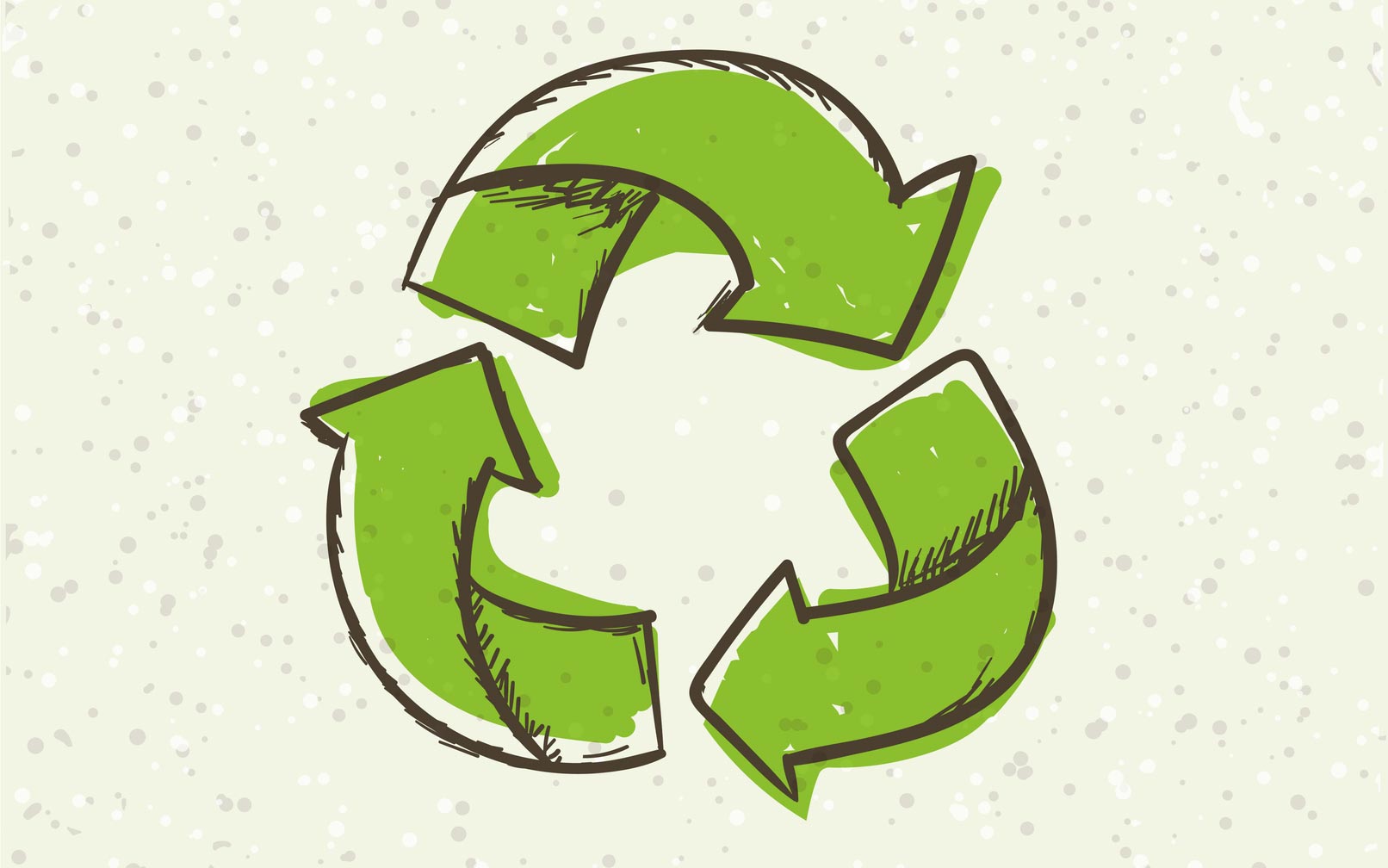According to Duke University, over 350,000 pounds of horticultural plastic waste litters the planet every year. You can help reduce this waste by recycling or reusing your old planters.
It’s no secret we are big on reducing waste and saving the planet. After all, our planters are made from recycled materials and are recyclable at the end of their lifeline.
While you can recycle your TerraCast planters, what about the other planters you’ve bought over the years? Even worse, what about those cheap plastic planters that plants come in when you buy them at the nursery? It seems like the only option is to throw them out, and even though some are recyclable, most recycling centers don’t accept them. With a little research you can find a place that will recycle them, or you can reuse them in numerous ways.
We’ve got you covered with these 5 ways to reuse or recycle planters.
#1. Use Smaller Planters To Plant In Larger Planters
You can reuse smaller planters, even those little flimsy plastic ones you get at the nursery, to plant larger plants. Here’s how:
-Turn the smaller plaster pot upside down in a larger container that you plan to put a plant in.
-Fill in the surrounding space with soil all the way up to the level you want the soil to reach.
-Pull out the small planter and you have the perfect hole to insert your plant and root ball.
#2. Use Them For Storage
Garden hoses, holiday decorations, gardening equipment and pretty much anything else can be stored inside of old planters. This offers a perfect place to keep important things you need without investing in pricey storage containers.
Old or unused planters are a great place to keep cables and electrical cords organized. Store the pots upside down in a garage, shed or workroom with the cords neatly tucked inside. When you need to use the cords, simply pull them through pre-made holes at the bottom of the pot. You could even add labels to the pots in order to distinguish different cords and where they are located.
If you have any seedling trays sitting around, you can use these to house smaller ornaments, office supplies or other small odds and ends that require hyper-organization.
#3. Create A DIY Fairy Garden
A popular new trend is to take old broken planters and turn them into intricate fairy gardens. Our planters are resistant to cracks, which means the likelihood of them breaking into many different pieces is slim to none. Stone planters and terracotta or clay planters commonly break into dozens of pieces, making them ideal for creating a DIY fairy garden.
Simply glue together the pieces any way that you see fit. You could use certain pieces to create staircases, little buildings or walls. One of the best parts is decorating the fairy garden with whimsical accents. Upcycling has never been so fun!
Watch this video to learn more about creating DIY fairy gardens from broken planters: https://www.youtube.com/watch?v=lnXusPi8EtM
#4. Use A Group Of Old Planters For DIY Projects
Four planters can be turned upside down and then used as a base to support wood planks or any other flat surface you are painting, sanding or working on. This allows you to evenly paint every last nook and cranny. Once the top dries, simply flip it over and paint the other side.
We wouldn’t recommend using flimsy plastic planters for this, as they could crush under the pressure and send your project crashing to the ground. Sturdier planters are better suited to this task.
#5. Recycle Plastic Planters
The average person creates 4.3 pounds of waste every single day, that’s a lot more than the 1.6 pounds of waste people generated per day back in 1960. 55% of the 220 million tons of waste generated every year in the US ends up in one of our 3,500+ landfills. The less waste you contribute to ever-growing landfills, the better off our beautiful (but endangered) planet will be.
If you have no further use for TerraCast planters, you can simply bring them to us to be remade into a beautiful new planter. You can rest assured our planters are recyclable and will not end up polluting any landfills.
But what about those flimsy one-time use planters all plants come in when you purchase them at a nursery or gardening center? At the time you purchase plants, ask your local gardening center or nursery if they accept planters after you transplant plants out of them. Some places will reuse planters and even have a drop off area set up where you can easily return them. For instance, Lowes and Home Depot accept plastic plant trays, pots and tags, even if you do not purchase plants from their store.
The Missouri Botanic Garden claims to have one of the best recycling programs in the nation for plastic planters. If you happen to live in the area, they have an easy drop off program. Simply clean out planters, sort them by type and then drop them off in the bins provided at the center. Learn more about this recycling program: http://www.missouribotanicalgarden.org/gardens-gardening/gardening-in-st.-louis/plastic-pot-recycling.aspx
Avoid Cheap Planters & Produce Less Waste
You can help reduce waste by avoiding purchasing cheap planters that break down within a couple of years. Purchasing long lasting planters ensures that you contribute less waste and waste less money rebuying planters.
TerraCast is proud to produce the toughest and longest lasting planters on the market. Our sustainable US-based manufacturing process results in a highly durable product that is resistant to corrosion, rust, impact damage and cracks. All of our planters are made from recycled materials, with our black planters made from nearly 100% post-consumer recycled materials. Plus, our planters are recyclable at the end of their lifeline.
Shop our complete collection of unbeatable planters for residential and commercial uses: https://www.terracastproducts.com/our-shop/planters/

